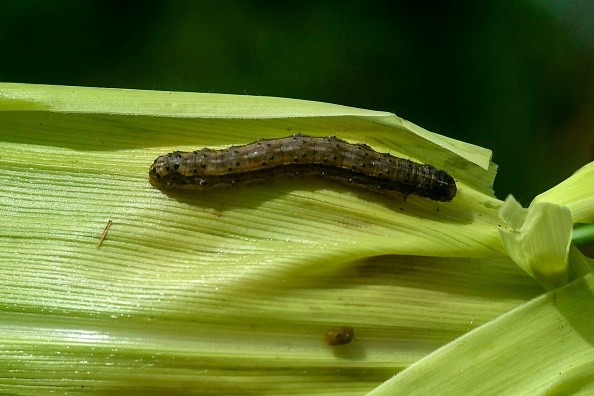A recent study found that the destructive fall armyworm pest poses a threat to almost all of Africa's maize crop.
The majority of the maize grown in Africa is produced in regions with climates that support the pest's seasonal infestations, according to scientists.
Fall armyworm pest is threatens maize crops

Researchers gathered 3,175 geo-tagged instances of the fall armyworm from around the world and used that data along with details on the pest's physiological needs to evaluate the suitability of the planet's climate from a spatial perspective, as per ScienceDaily.
They also discovered that fall armyworm can grow all year long in nearly 92% of Africa's maize-growing regions.
95% of the crop is climate-suitable for fall armyworm and at least three other pests, including the maize stalk borer, Western corn rootworm, and Asiatic witchweed.
Fall armyworm outbreaks were first noted in southwest Nigerian maize fields in January 2016, and were later discovered in Benin, Togo, So Tomé, and Principe.
More than 40 countries in Africa, including Ethiopia, Kenya, and Tanzania, have since been infested by the pest.
The economic impact of a variety of invasive alien species (IAS) on Africa's agricultural sector, which they estimated to be USD $65.58 billion a year, was the subject of the first in-depth study on IAS conducted by CABI scientists in 2021.
They found that the fall armyworm alone was responsible for the highest annual yield losses, amounting to USD $9.4 billion.
The study, which is a component of a larger GEMS informatics project involving Global Pest Risk Analytics, concluded by proposing that crop management may benefit more from genetic fixes and environmentally friendly biological control agents.
They claimed that these call for fewer, more timely trips to the market to pick up the fungicides and insecticides that are required as seasonal pest infestations develop.
They also acknowledged that while IPM practices are a different, frequently complementary, approach to managing crop pests, particularly in tropical places where natural enemies can survive all year round, IPM is not widely used in the developing world.
What does Armywormknown features are?
Each year, the Midwest is home to a number of armyworm species.
However, the emergence of economically destructive populations is influenced by a number of variables, including crop management techniques, planting dates, insect migration patterns, parasite and predator populations, weather, and more, as per Purdue University.
Extremely late-planted corn, which typically suffers significant damage from this pest, is attractive to fall armyworm moths.
The forewings of the fall armyworm moth are a dark gray color with light and dark splotches, and they each have a pronounced white spot near the extreme end.
Larvae that have just hatched are green and move in a looping movement.
The smooth-skinned, nearly-black larvae of the fall armyworm range in color from a light tan or green.
Three yellow-white hairlines run down each of their backs.
A wider dark stripe is visible between the yellow lines on each side of their bodies.
One must look at the insect's head to tell this larva apart from other armyworm species or corn earworm.
Between the eyes, the fall armyworm's head has a prominent white, inverted Y-shaped suture.
Related Article: Scientist Claims That Wasps Aren't Just Pointless Creatures
© 2025 NatureWorldNews.com All rights reserved. Do not reproduce without permission.





